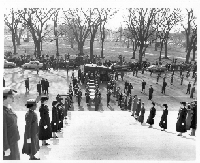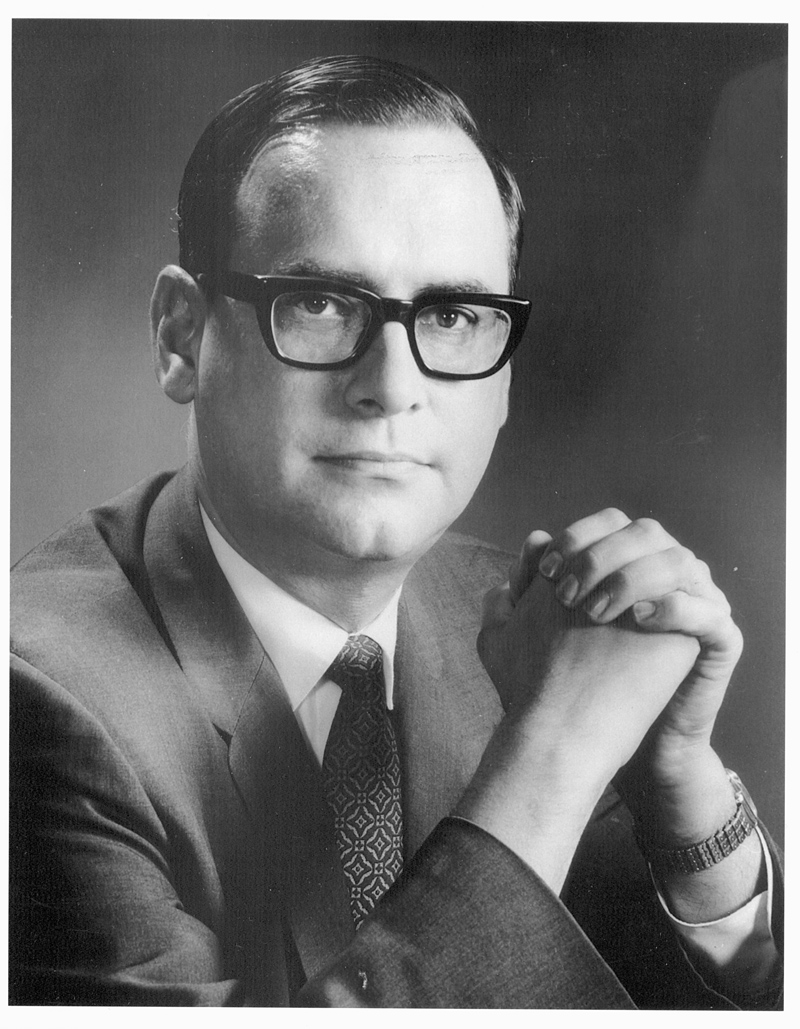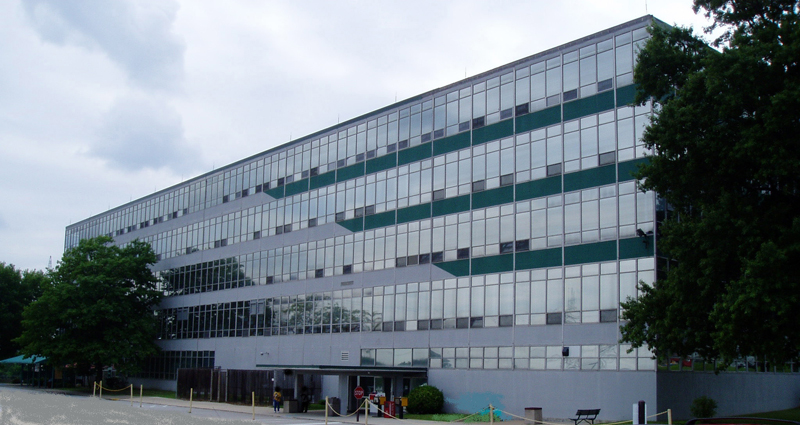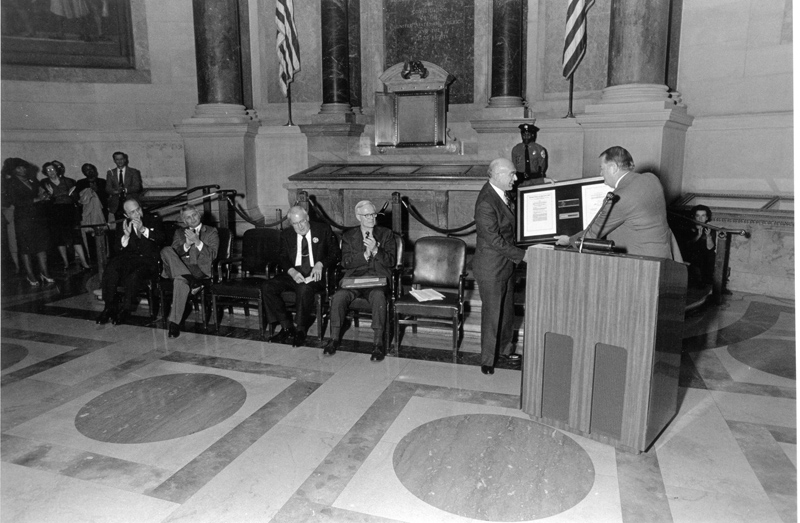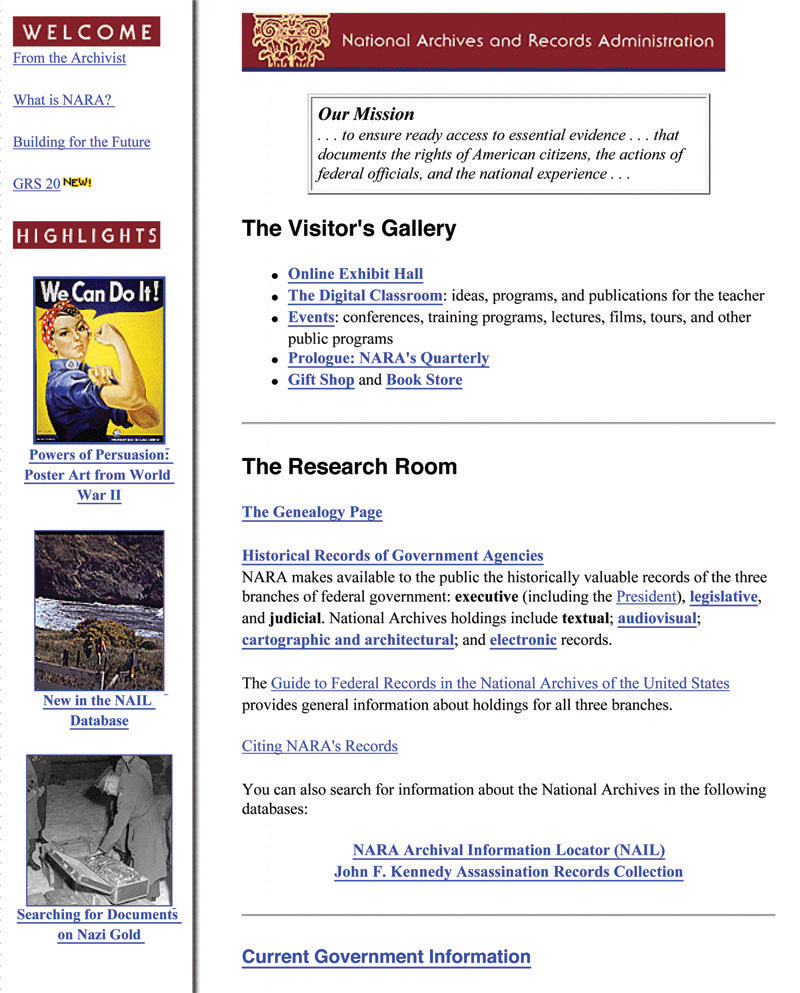
Archives through the Decades
Summer 2009, Vol. 41, No. 2
Archives through the Decades
By Benjamin Guterman
Read Our Story: How the National Archives Evolved over 75 Years of Change and Challenges
1877 A fire in the top floor of the U.S. Patent Building led Quartermaster General Montgomery Meigs to propose a fireproof Hall of Records.
1895 Prof. J. Franklin Jameson of Brown University urged the American Historical Association to promote use of source materials.
1904 The publication of the Guide to the Archives of the Government of the United States in Washington by the Public Archives Commission in 1904 was important to the development of the federal archives movement.
1913 President William Howard Taft signed a bill authorizing planning a national archives of 3 million cubic feet.
1921 A Commerce Department fire on January 10, 1921, destroyed the 1890 federal census records.
1926 President Calvin Coolidge signed a bill for public buildings, including $1 million toward an archives to be located in the Federal Triangle.
1931 On September 9, 1931, ground was broken for the Archives building in Washington, D.C.
1934 President Franklin Roosevelt signed "An Act to Establish a National Archives of the United States Government, and for other purposes" on June 19, which also established the National Historical Publications Commission (NHPC).
1934 R.D.W. Connor became the first Archivist of the United States.
1935 By November 1935, the National Archives Building was occupied by 265 employees.
1935 The Federal Register Act of July 26 established the publication of government documents within the National Archives.
1936 In June 1936 the Archives accessioned first 58,800 cubic feet of records, mostly from the Veterans Administration and U.S. Food Administration.
1938 The National Archives Building was completed on August 10.
1941 The Franklin D. Roosevelt Library was dedicated on July 4.
1941 Solon J. Buck became the second Archivist of the United States.
1941 A special committee on finding aids proposed the Record Group ("RG") organizational method, and a publications and finding aid program was begun.
1942-1945 During World War II, the U.S. military, the National Resources Planning Board, and the Office of Strategic Services stationed employees in the National Archives Building for research in records and intelligence gathering.
1948 The agency's first comprehensive guide, Guide to Records of the National Archives, was published.
1948 Wayne C. Grover became the third Archivist of the United States.
1949 In January 1949, the Freedom Train ended an 18-month traveling exhibit of the United States that included documents from the National Archives.
1949 On June 30, the Federal Property and Administrative Services Act transferred the National Archives to the General Services Administration (GSA). The agency's name changed to National Archives and Records Service (NARS).
1950 On May 1, the first NARS federal records center opened in Brooklyn, New York; by 1955 there were 10 centers with a total staff of 500.
1952 On December 13, the Charters of Freedom were transported from the Library of Congress to the exhibit hall of the National Archives with full military escort.
1955 The Presidential Libraries Act provided for establishment of a system of presidential libraries.
1957 The Harry S. Truman Library was dedicated on July 6.
1958 Approximately 100,000 cubic feet of captured records held at the Alexandria, VA, records center, were transferred to NARS in January.
1962 The Dwight D. Eisenhower Library was dedicated on May 1.
1962 The Herbert Hoover Library was dedicated on August 10.
1964 The National Historical Publications Commission (NHPC) was authorized by Congress to receive funds and award grants for documentary editions.
1968 Robert Bahmer became the fourth Archivist of the United States.
1968 James B. Rhoads became the fifth Archivist of the United States.
1968 By 1968 regional archives branches existed in all the federal records centers; by 1978, 15 records centers existed.
1969 Prologue: The Journal of the National Archives began publication with the spring issue.
1969 The Data Archives Staff was created in the Office of Records Management for integrating machine-readable records.
1971 The Lyndon B. Johnson Library was dedicated on May 22.
1973 A fire at the National Personnel Records Center in St. Louis on July 12 destroyed valuable military service records.
1974 The Presidential Recordings and Materials Preservation Act established rules for access, giving the government custody over the Nixon tape recordings, documents, and records.
1974 Congress redesignated the NHPC as the NHPRC on December 22 with the mission to promote collection and preservation of state, local, and private record collections.
1978 The Presidential Records Act made all presidential records created after January 20, 1981, the property of the United States.
1979 The John F. Kennedy Library was dedicated on October 20.
1980 Robert M. Warner became the sixth Archivist of the United States.
1981 The Gerald R. Ford Library was dedicated on April 27, and the Ford Museum followed on September 18, 1981.
1985 NARA became an independent agency through the National Archives and Records Administration Act on April 1.
1986 The Jimmy Carter Library was dedicated on October 1.
1987 Don W. Wilson became the seventh Archivist of the United States.
1991 The Ronald Reagan Library was dedicated on November 4.
1992 The Foundation for the National Archives was established.
1994 NARA established its first Internet presence in May with CLIO, the agency's gopher, and subsequently its first web page at www.nara.gov.
1994 The National Archives at College Park, Maryland, was dedicated on May 12.
1995 John W. Carlin became the eighth Archivist of the United States.
1997 The George Bush Library was dedicated on November 6.
1998 The Lee's Summit facility opened in Missouri on June 1.
2000 The Electronic Records Archives (ERA) was established on January 19 to manage the extensive and diverse new accessions in electronic formats.
2001 A multiyear project began to renovate the National Archives Building and reencase the Charters of Freedom.
2001 The "American Originals" exhibit began a three-year nationwide tour on October 5 to nine cities.
2002 The Archival Research Catalog (ARC) became available to the public on September 16.
2003 The Rotunda of the National Archives Building reopened on September 18 after major renovation.
2004 The first electronic version of textual records were received (1973 and 1974 State Department cables).
2004 The Public Vaults opened in the Rotunda in November.
2004 The William J. Clinton Library was dedicated on November 18.
2005 Allen Weinstein became the ninth Archivist of the United States.
2007 NARA took over the Richard Nixon Library in Yorba Linda, California, with a continued office in the National Archives at College Park, Maryland.
2008 The National Declassification Initiative (NDI) was started by NARA to more efficiently coordinate interagency efforts in records classification and declassification.
2009 The Center for Legislative Archives opened part of the 9/11 Commission records.
2009 David S. Ferriero became the 10th Archivist of the United States.
Read Our Story: How the National Archives Evolved over 75 Years of Change and Challenges









